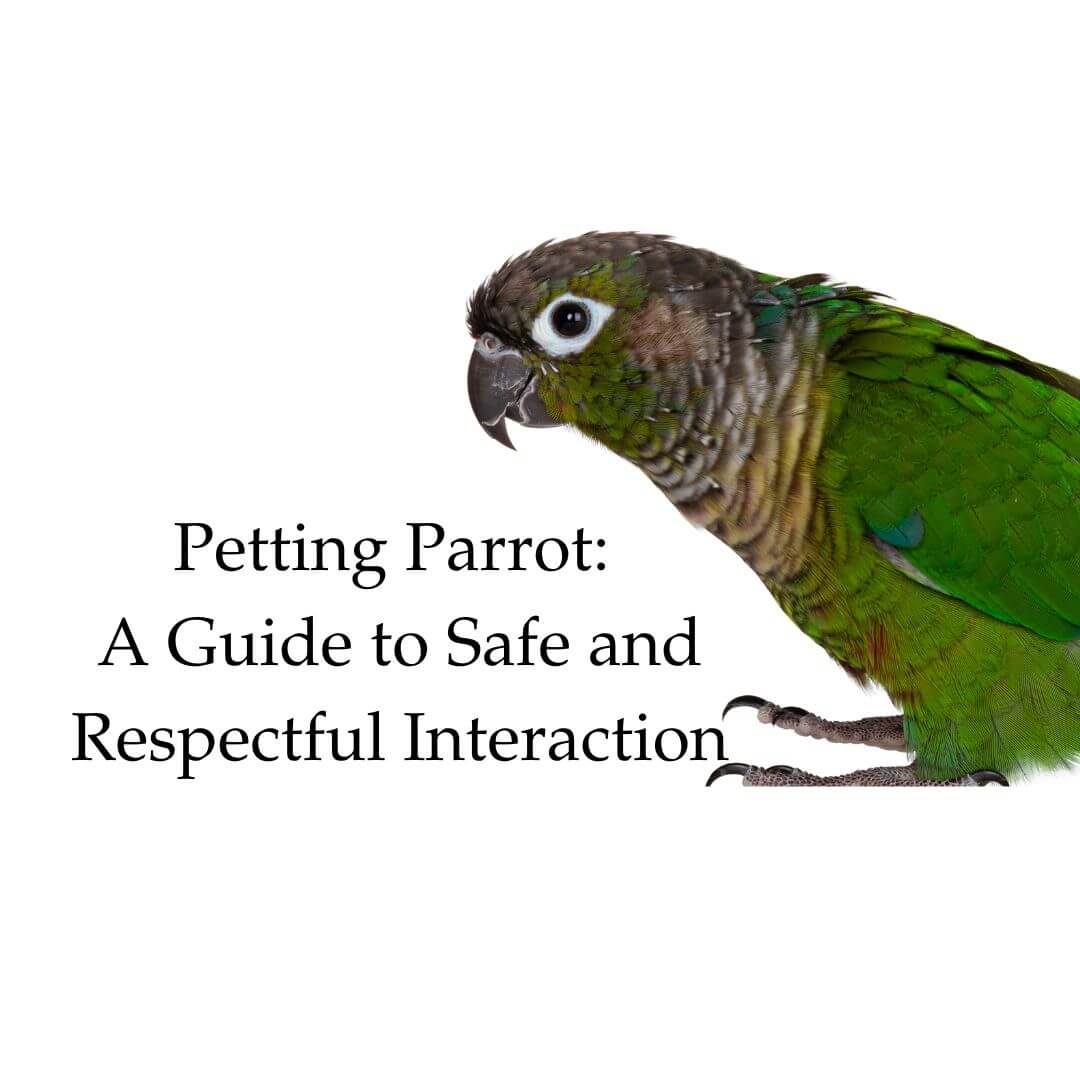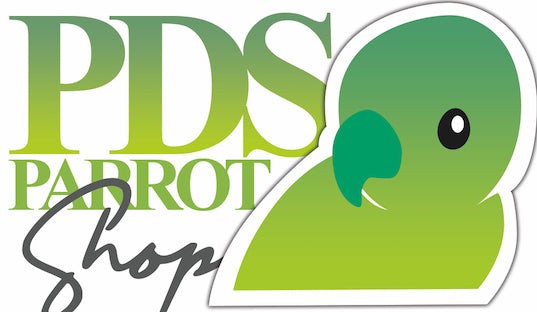
Petting Parrot: A Guide to Safe and Respectful Interaction
Share
Parrots are intelligent, social creatures that thrive on trust and positive interaction. One of the ways to build a strong bond with your parrot is through gentle petting—but it’s important to know where and how to touch them. Petting a parrot incorrectly can accidentally send the wrong signals, especially during breeding season. Let's explore the best practices for petting your feathered companion.
Why Petting Matters to Parrots
In the wild, parrots groom each other through a behavior called allopreening. This mutual grooming helps maintain their feathers, build social bonds, and show trust. When you pet your parrot correctly, you’re mimicking this important bonding behavior. It tells your bird, “I’m part of your flock, and I care for you.”
However, parrots are also very sensitive creatures. Petting in the wrong place can lead to overstimulation, hormonal behaviors, or even aggression. Understanding the right way to pet them is key to a happy, healthy relationship.

Safe Areas to Pet Your Parrot
1. Top of the Head
The top of the head is one of the safest and most welcome spots for petting. Because parrots cannot easily groom this area themselves, they appreciate help from trusted humans. Use gentle strokes or soft scritches, and always watch for positive body language like relaxed feathers or closing eyes.
Tip: Start by offering your hand slowly and letting the parrot lower its head toward you. This shows they are inviting the petting!
2. Back of the Neck
Light scratches on the back of the neck are often soothing and enjoyable. Among bonded parrots, this is a common area for preening. Focus on slow, gentle movements rather than vigorous rubbing.
3. Cheeks and Jawline
Some parrots adore being scratched on their cheeks, under their beak, or along their jawline. These spots are often associated with comfort and trust. However, some birds may be more sensitive here, so move slowly and stop if they show signs of discomfort.
4. Beak (with Caution)
Certain parrots allow gentle touches around the beak. This type of interaction is highly trust-based and should never be forced. Light taps or soft scratches under the chin can also be well-received if the parrot initiates.
In some birds, continuously touching the beak can trigger hormonal responses.
Important: If your parrot is uncomfortable, they might lightly nip or turn their head away. Always respect these signs.
5. Feet
Handling your parrot’s feet may feel unusual at first, but it can be an important part of taming and training. Gently touching and holding their feet helps desensitize them to handling, making nail trims and vet visits easier. Start slowly, and reward them with praise or a treat for staying calm.
Areas to Avoid When Petting
Back, Belly, and Wings
Although it’s tempting to stroke a parrot's soft feathers, touching their back, belly, or wings is risky. In bird body language, these touches can mimic courtship behavior and signal sexual readiness. This can cause your parrot to become hormonal, frustrated, or even aggressive toward you.
Tail
The tail feathers are delicate and essential for balance and flight. Touching or grabbing a parrot’s tail can make them feel vulnerable and stressed. Many parrots react strongly to unwanted contact with their tail, sometimes with quick movements or defensive behavior. Always avoid petting or handling the tail to maintain your bird’s trust and comfort.
Vent (Cloaca)
The vent is located under the tail and is where the bird's reproductive and waste systems exit. Touching this area is highly inappropriate and sends strong sexual signals. Always keep interaction respectful and avoid any area below the shoulders.
Signs Your Parrot Enjoys Being Petted
Positive body language includes:
-
Fluffing up feathers
-
Lowering their head toward your hand
-
Lightly grinding their beak (a happy noise)
-
Closing their eyes while you pet them
-
Staying relaxed and calm
If you notice these signs, your bird is enjoying the interaction.
Signs You Should Stop Petting
Warning signs include:
-
Biting or nipping
-
Pulling away or avoiding your hand
-
Puffing up tightly (not loose, relaxed feathers)
-
Hissing, growling, or other signs of agitation
-
Sudden vocal outbursts or screaming
Always listen to your parrot’s body language. Respect builds trust far better than persistence.
Tips for Successful Petting Sessions
-
Keep sessions short: Especially in the beginning, limit petting to a few minutes to avoid overstimulation.
-
Let your bird initiate: Offer your hand and wait for your parrot to come closer. Forced petting can cause fear.
-
Use positive reinforcement: Reward calm behavior with praise, treats, or more gentle scratches.
-
Watch seasonal changes: During the breeding season, many parrots become more sensitive. Petting should be minimized to avoid hormonal issues.
-
Be consistent: Routine and predictability help parrots feel safe.
Final Thoughts
Respectful petting is an important part of a healthy relationship with your parrot. By understanding where they enjoy being touched—and where to avoid—you can build a strong, loving bond that makes your parrot feel safe and valued. Always approach petting with patience, empathy, and a willingness to listen to your bird’s unique needs.
When it comes to petting parrots, trust, respect, and gentle hands go a long way.
More Articles on Bird Health
How the Anatomy of Parrot Shapes Behavior and Enrichment
Monika Sangar, MSc – Molecular Biology | Avian Nutrition Specialist | Founder: PDSnonprofit | Owner: Pds Parrot Shop
Monika Sangar is a parrot rescuer, bird food chef, and toy designer with over a decade of experience in avian care and nutrition. She is the founder of Prego Dalliance Sanctuary and the author of The Science of Avian Nutrition, a cookbook dedicated to fresh, healthy meals for parrots. Explore more bird care tips and bird toys at PDS Parrot Shop!

1 comment
I have had my parrot for over 20 years but suddenly she has started attacking my son for no reason she flies at him every time he comes into the room.she is only in the cage at bedtime.